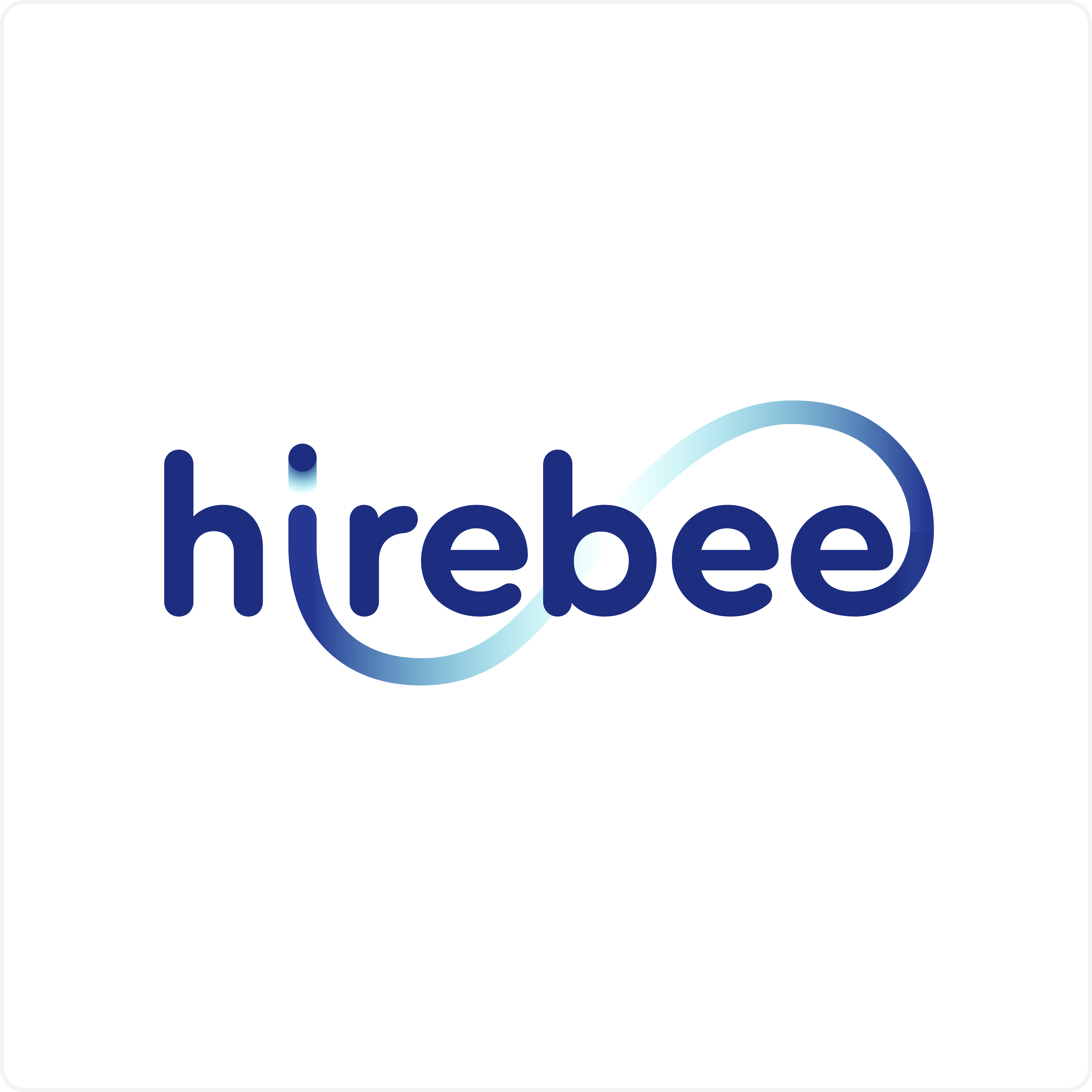Cost per hire is a vital metric in the realm of recruitment, providing organizations with valuable insights into the financial implications of their hiring processes. It refers to the total expenditure incurred in recruiting and onboarding a new employee. Understanding, calculating, and utilizing cost per hire is crucial for businesses to make informed decisions, optimize their recruitment strategies, and allocate resources effectively.
This outline aims to delve into the concept of cost per hire, explore its components, discuss the calculation methodology, highlight its utilization for evaluating recruitment strategies, and address the challenges and best practices associated with this metric. By gaining a comprehensive understanding of cost per hire, organizations can streamline their hiring processes and make informed decisions that contribute to their overall success.
And if you still need assistance in understanding these metrics, then you can get in touch with Hirebee. We have the expertise to help you get a better idea about the Cost Per Hire metric and how to utilize it properly.
Table of Contents
ToggleUnderstanding Cost Per Hire
By considering these factors comprehensively, organizations can gain a holistic view of the true cost of hiring a new employee. Furthermore, it will help you to learn how to calculate the average cost
Factors Included In Cost Per Hire
Cost per hire encompasses various factors that contribute to the overall expenses incurred during the recruitment process. These factors include:
External Recruitment Costs
This includes expenses related to external resources, such as recruitment agencies, job boards, career fairs, and advertising costs. These costs vary depending on the chosen recruitment channels and the extent of their utilization.
Internal Recruitment Costs
These are the costs associated with internal resources used in the hiring process, such as HR personnel, hiring managers’ time and effort, and any internal recruitment software or systems utilized.
Time and Effort Spent By the Hiring Team
This includes the hours invested by the hiring team members, such as HR professionals, hiring managers, and interviewers. It also considers their salaries and benefits as part of the cost calculation.
Advertising and Job Posting Expenses
This covers the costs associated with creating and posting job advertisements, including fees for job boards, social media promotions, and print media advertising.
Pre-Employment Assessments and Tests
If the recruitment process includes assessments, aptitude tests, or background checks, the expenses incurred in conducting these evaluations are considered as part of the cost per hire.
Onboarding and Training Costs
Once a candidate is hired, there are additional expenses associated with their onboarding and training. This includes orientation programs, training materials, and any external training or workshops provided to new employees.
(Note: The content provided is for informational purposes only and should not be considered as financial or accounting advice. Organizations should consult with professionals to customize their cost per hire calculations based on their specific needs and circumstances.)
Calculating Cost Per Hire

Accurate cost per hire calculations enable organizations to assess the financial impact of their recruitment efforts and make data-driven decisions to optimize their hiring processes.
Gathering Data and Information
To accurately calculate the cost per hire, organizations need to gather relevant data and information regarding the expenses incurred during the recruitment process. The following steps can be taken:
Identifying Relevant Cost Categories
Determine the cost categories that are applicable to your organization’s recruitment process. This may include external recruitment costs, internal recruitment costs, advertising expenses, assessments and tests, and onboarding/training costs.
Collecting Expenditure Data
Gather data on the actual expenses incurred within each cost category. This involves reviewing financial records, invoices, receipts, and any other relevant documentation. It may also require collaboration with different departments, such as HR, finance, and procurement, to ensure comprehensive data collection.
Calculation Formula for Cost Per Hire
The formula for calculating cost per hire is relatively straightforward:
Cost per Hire = (Total External Costs + Total Internal Costs) / Number of Hires
Add up the total expenses within each cost category (external and internal costs) and divide it by the total number of hires within a specific period. Examples of cost per employee formula calculations:
Single hire scenario
Suppose an organization incurs $5,000 in external costs and $3,000 in internal costs to hire a single employee. The cost per hire would be:
Cost per Hire = ($5,000 + $3,000) / 1 = $8,000
Multiple Hires Scenario
Consider an organization that incurs $50,000 in external costs and $30,000 in internal costs to hire 10 employees. The cost per hire would be:
Cost per Hire = ($50,000 + $30,000) / 10 = $8,000
These examples illustrate how the cost per hire can be calculated based on the total expenses and the number of hires made.
Utilizing Cost Per Hire

By leveraging cost per hire as a metric, organizations can make data-driven decisions, optimize their recruitment efforts, and improve the overall efficiency and effectiveness of their hiring processes.
Evaluating Recruitment Strategies and Channels
One of the primary uses of cost per hire is to evaluate the effectiveness of different recruitment strategies and channels. By tracking the cost per hire for each source or method, organizations can identify the most cost-effective and efficient approaches to attract and hire talent. This analysis allows them to allocate resources wisely, focusing on channels that yield high-quality candidates at a lower cost.
Identifying Areas for Cost Reduction and Process Improvement
Cost per hire analysis helps organizations identify areas where they can reduce expenses and improve their hiring processes. By analyzing the components of the cost per hire, such as external and internal costs, organizations can pinpoint inefficiencies and bottlenecks in their recruitment process. Utilizing an HR analytics tool can further enhance this analysis by providing real-time data and predictive insights, enabling businesses to streamline operations, implement automation or technology solutions, and optimize resource allocation to reduce costs and improve overall efficiency.
Benchmarking Against Industry Standards and Competitors
Comparing the organization’s cost per hire to industry benchmarks and competitors’ performance provides valuable insights. It helps organizations understand how their recruitment costs align with industry standards and identify areas for improvement. If their cost per hire exceeds the industry average, it may indicate the need to re-evaluate their strategies and seek more cost-effective alternatives.
Challenges and Limitations of Cost Per Hire
While cost per hire is a valuable metric for understanding the financial implications of recruitment, it is important to be aware of the challenges and limitations associated with its calculation and interpretation.
Incomplete Cost Tracking and Measurement
Accurately tracking and measuring all the costs associated with hiring can be challenging. Some costs may be hidden or difficult to quantify, such as the time and effort invested by hiring managers or the opportunity costs of positions remaining vacant during the recruitment process. Incomplete cost tracking can lead to an inaccurate representation of the true cost per hire.
Difficulty in Attributing Costs to Specific Hires
In cases where multiple hires are made within a given period, attributing specific costs to each hire becomes complex. Costs related to general recruitment activities, such as advertising or assessment tools, may need to be divided among multiple hires, which can introduce a level of subjectivity and impact the accuracy of individual cost-per-hire calculations.
External Factors Impacting Cost Per Hire Calculations
Cost per hire calculations may be influenced by external factors beyond the control of the organization, such as economic conditions, market demand for certain skill sets, or regional variations in recruitment costs. These external factors can introduce variability in cost per hire metrics, making it challenging to directly compare results across different periods or organizations.
Still not sure what to do? Then, get in touch with Hirebee and we can help you with understanding the average cost calculation formula and a lot more.
Best Practices for Effective Cost per Hire Management

To effectively manage cost per hire, organizations can implement the following best practices:
Implementing Robust Cost Tracking Systems
Establishing a comprehensive and accurate system for tracking recruitment expenses ensures that all relevant costs are captured and attributed correctly.
Automating Data Collection and Reporting
Leveraging technology solutions to automate data collection and reporting streamlines the process, reduces manual errors, and provides real-time visibility into cost-per-hire metrics.
Regularly Reviewing and Analyzing Cost Per Hire Data
Conducting regular reviews and analyses of cost per hire data allows organizations to identify trends, anomalies, and areas for improvement.
Collaborating With Finance and HR Teams
Close collaboration between finance and HR teams ensures alignment in cost-tracking methodologies and facilitates a comprehensive understanding of recruitment costs.
By implementing these best practices, organizations can enhance their cost per hire management, make informed decisions, and optimize their recruitment processes for greater efficiency and cost-effectiveness.
Conclusion
Cost per hire is a valuable metric that provides organizations with insights into the financial aspects of their recruitment processes. By understanding, calculating, and utilizing cost per hire, businesses can make informed decisions, optimize their recruitment strategies, and allocate resources effectively.
Throughout this outline, we have explored the components of cost per hire, the process of calculating it, and its utilization for evaluating recruitment strategies, identifying areas for cost reduction and process improvement, and benchmarking against industry standards. We have also discussed the challenges and limitations associated with this metric and highlighted best practices for effective cost per hire management.
This metric is especially critical when recruiting for startup environments, where budgets are often tight and every hire must count. Understanding the financial impact of each hire helps startups stay efficient, prioritize smart investments, and scale their teams responsibly.
By leveraging and understanding how to calculate cost per hire, organizations can gain a comprehensive understanding of their recruitment costs, make data-driven decisions, and continuously improve their hiring processes. It empowers organizations to optimize their resource allocation, improve efficiency, and ultimately contribute to their overall success in attracting and retaining top talent.
Understanding and utilizing cost per hire is an ongoing process that requires continuous monitoring, evaluation, and adaptation. By adopting best practices and staying attuned to industry trends, organizations can harness the power of cost per hire to drive strategic recruitment decisions and achieve their talent acquisition goals.









